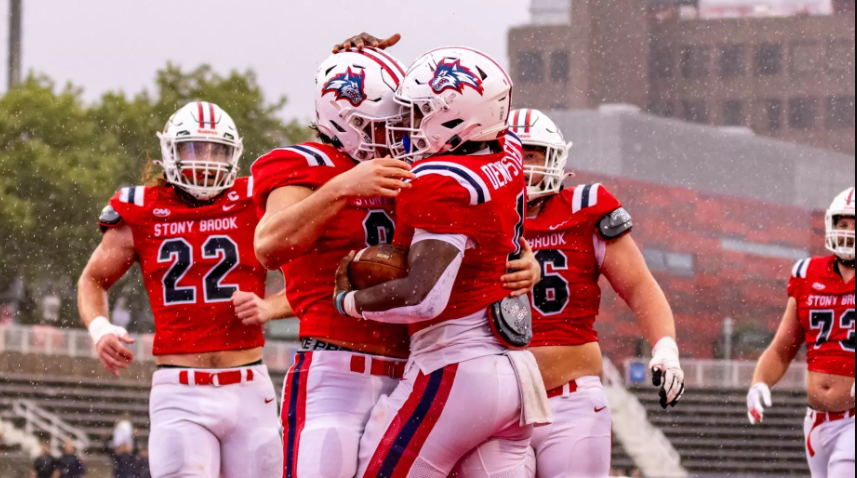
What Stony Brook’s Last Game Revealed About Their Success
Stony Brook’s recent football game showcased a pivotal aspect of their success: a solid performance in the turnover battle. Finishing plus-two in this critical statistic, the team demonstrated not only resilience but also strategic execution that ultimately contributed to their victory. Turnovers are often viewed as a game’s defining moments, influencing momentum and shifting the dynamics of play. In this match, Stony Brook’s ability to recover two fumbles was a testament to their preparedness and focus, qualities that are essential for any team looking to achieve consistent success on the field.
The importance of winning the turnover battle cannot be overstated in football. It is a metric that often correlates strongly with winning games. Teams that can force turnovers and protect the ball tend to control the pace of the game, limiting their opponents’ opportunities while maximizing their own. Stony Brook’s performance exemplified this principle; recovering two fumbles not only stifled the opposition’s drives but also provided the Seawolves with critical scoring opportunities.
To understand the significance of this achievement, one must look at the broader implications of turnovers in a game. When a defense manages to create turnovers, it disrupts the opposing offense’s rhythm and can lead to a sudden shift in momentum. For Stony Brook, recovering fumbles meant that they could not only stop potential scoring drives from their opponents but also seize control of the game, putting pressure back on the other side.
Turnovers can be the result of various factors—poor decision-making by the offense, exceptional play by the defense, or a combination of both. In Stony Brook’s case, their defensive unit displayed a high level of awareness and aggressiveness. This was evident in their ability to capitalize on the opposition’s mistakes. Each fumble recovery was a product of disciplined play, strategic positioning, and a relentless pursuit of the ball. Players were quick to respond to loose balls, demonstrating their commitment to the fundamentals of the game.
The emotional and psychological effects of turnovers are also worth noting. Each time Stony Brook recovered a fumble, it not only demoralized their opponents but also energized the Seawolves. The sidelines erupted with enthusiasm, showcasing a team culture that thrives on collective success. This emotional lift can have a cascading effect, boosting player performance across the board. A defense that is confident in its ability to force turnovers often plays with a heightened sense of urgency and tenacity, creating a more formidable unit overall.
From an offensive standpoint, the turnovers allowed Stony Brook to dictate the flow of the game. With each recovery, the Seawolves had the opportunity to capitalize on favorable field position. This advantage is crucial, especially in tight games where every yard counts. The offense could afford to be more aggressive, knowing that their defense had provided them with a buffer. This freedom to take calculated risks often leads to explosive plays, as the players feel empowered to make big decisions without the looming fear of making mistakes.
Moreover, Stony Brook’s ability to recover two fumbles speaks volumes about their preparation and emphasis on ball security. The coaching staff must have instilled a strong mindset regarding turnovers during practice. Players are taught the importance of maintaining possession and the devastating consequences of losing the ball. This awareness permeates the team, influencing their approach to both offense and defense. The culture around turnovers becomes a focal point, where every player understands their role in protecting the football and creating opportunities for their teammates.
As the game progressed, the significance of these fumbles became increasingly apparent. Each recovery served as a turning point, leading to shifts in momentum that Stony Brook could leverage. In many cases, teams that manage to capitalize on turnovers find themselves not just improving their chances of winning but also bolstering their confidence. The psychological boost from successful turnovers can set the tone for future games, allowing the Seawolves to build on this success in subsequent matchups.
The impact of winning the turnover battle extends beyond a single game. It is often a predictor of long-term success in a season. Teams that consistently create turnovers tend to rank among the top in their conferences. They establish a reputation for being opportunistic, which can influence how other teams approach their games. Opponents may begin to play with caution, fearing the possibility of turnovers, which can alter their game plans and lead to more conservative play.
For Stony Brook, the recovery of two fumbles is a stepping stone in a larger journey. It reflects their capabilities on both sides of the ball and sets a standard for performance moving forward. The ability to win the turnover battle consistently can elevate a team from good to great, positioning them as formidable contenders within their conference.
In the context of the season, this game serves as a reminder of what Stony Brook is capable of when they put their minds to it. The focus on turnovers will likely be a key point of emphasis in the following practices and games. Coaches will analyze game film to reinforce the importance of creating turnovers while also ensuring that ball security is prioritized by the offense. This continual focus on the turnover battle will be crucial as the team seeks to build on their recent success.
However, Stony Brook’s ability to finish plus-two in the turnover battle and recover two fumbles has significant implications for their season. It highlights their defensive prowess, emphasizes the importance of preparation and focus, and showcases the psychological impact of turnovers on the game. As they move forward, maintaining this emphasis on turnovers will be essential for their success. Winning the turnover battle is not just about statistics; it is a mindset that can define a team’s identity. If Stony Brook can continue to create opportunities through turnovers, they will position themselves for success in the remainder of the season and beyond, solidifying their reputation as a competitive force in college football.

Leave a Reply